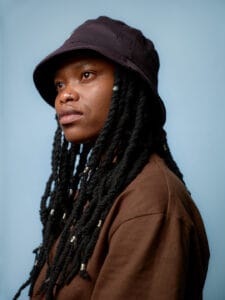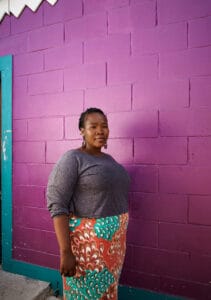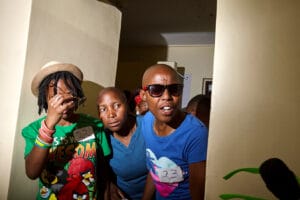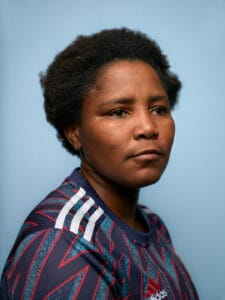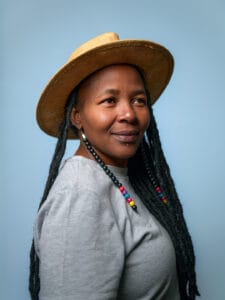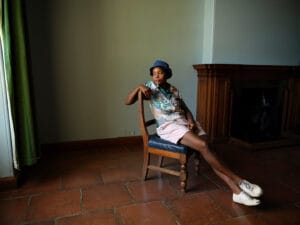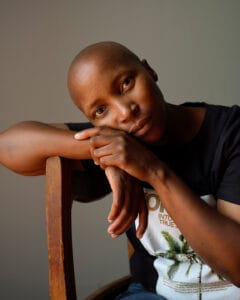Each year on March 31, the world observes Transgender Day of Visibility (TDOV) to raise awareness about transgender people. It is a day to celebrate the lives and contributions of trans people, while also drawing attention to the disproportionate levels of poverty, discrimination, and violence the community faces compared to cisgender (non-transgender) people.
International TDOV was created in 2010 by trans advocate Rachel Crandall. Crandall, the head of Transgender Michigan, created TDOV in response to the overwhelming majority of media stories about transgender people being focused on violence. She hoped to create a day where people could celebrate the lives of transgender people, while simultaneously acknowledging that due to discrimination, not every trans person can or wants to be visible.
Building Power and Solidarity Across Generations, A National Call for Communities and Allies
To mark the significance of this moment, eight LGBTQ movement organizations came together in an emerging and unprecedented collaboration aiming to unify movements of queer and trans people and galvanize their membership to defy the current administration’s onslaught of targeted anti-trans attacks. The first public offering of this effort was a collaborative, virtual event: Building Power and Solidarity Across Generations, which was held on March 31, 2025 on the Transgender Law Center’s YouTube page. This collaborative event was hosted by GLAAD and Advocates for Trans Equality (A4TE).
Given that only a minority of Americans say they personally know someone who’s transgender, the vast majority of the public learns about trans people from the media, including TV, film, and news. This is a problem because, as shown in the Netflix documentary Disclosure, the media has misrepresented, mischaracterized, and stereotyped trans people since the invention of film. These false depictions have indisputably shaped the cultural understanding of who trans people are and have modeled, often for the worse, how the average person should react to and treat trans people in their own lives.
Evident in 2025 is intensifying vitriol and attacks against trans people led by a vocal but loud minority.We are seeing a continued year-over-year increase in anti-LGBTQ bills, including more than 450 anti-LGBTQ bills introduced in state legislatures across the country, according to the American Civil Liberties Union. In addition to these legislative attacks, trans people continue to face direct physical violence, declared an ongoing epidemic by the American Medical Association since 2019, which disproportionately affects Black trans women.
That’s why it’s still necessary for trans people to be seen through authentic, diverse, and accurate stories which reflect the actual lived experiences of trans people; both for themselves and for the people who believe they’ve never met a trans person.
This includes news media, where too often trans people’s voices are missing from coverage of anti-trans laws and policies affecting their lives. Major news outlets are not exempt from fair and accurate coverage of transgender people; Media Matters recorded that The New York Times excluded the perspectives of trans people from two-thirds (60%) of its stories about anti-trans legislation in the year following public criticism for its handling of the topic. We need and deserve outlets like The New York Times to do better.
By excluding trans people in covering issues facing the community, including excluding knowledgeable experts who are trans, and by lacking trans representation in newsrooms to help guide coverage, anti-trans discrimination is often misrepresented in the news as a “culture clash” and “just asking questions” rather than as willful misinformation and targeted hate. This oversight has real implications that shape how Americans view and understand trans people.
While backlash is a reality that trans people and allies are experiencing, acceptance continues to rise with personal familiarity and exposure to trans stories in media.
That’s why this year for TDOV, GLAAD has partnered with and is supporting a number of advocates and organizations on initiatives to counteract the disinformation campaign targeting the trans community.
- Talking about LGBTQ Issues: Research-based Resources to Help Shape Discussions
- Fact Sheet: Reporter Guide to Covering Transgender People, Topics, and Legislation
- Trans Day of Visibility: A Message from 6 Trans Community Elders
- The 19th’s Watchlist: Elliot Page, Peppermint and other trans icons share the movies that shaped them and affirm the dignity of trans people
- Cosmopolitan’s How to Talk to Your Friends and Family About the Trans Community: Experts weigh in on how to approach conversations with facts and confidence
- ELLE’s AFFIRMED series, helmed by guest editor Tommy Dorfman, explores gender-affirming care in all its many forms. All stories were done with support from GLAAD, and all illustrations were done by Anshika Khullar.
- GILEAD x GLAAD shares Southern Storybank, a series of video portraits featuring transgender people, as well as people living with HIV, across the U.S. South, describing their daily lives and lifelong journeys in their own words.
- GLAAD and Getty Images continue to drive awareness for transgender people through visual representation, encouraging brands and marketers to help improve transgender imagery with resources to guide visual storytelling. Read more about the partnership here and ways to take action.
Below are some resources from GLAAD and other organizations that can be used to create accurate coverage of transgender people in media.
– Medical Association Statements in Support of Health Care for Transgender People and Youth
– Fact Sheet: Evidence Based Health Care for Transgender People and Youth
– GLAAD’s Voter Poll Indicates Anti-Trans Campaigning is Failing
– Fact Sheet for Campaign Reporters: Best Practices for Covering LGBTQ People and Topics
– Jon Stewart sets the record straight on gender-affirming care
– Legislation Affecting LGBTQ Rights Across the Country with Focus on Anti-Trans Bills (ACLU)
– States Seeking to Pass Laws Protecting Reproductive and Transgender Healthcare
– Snapshot: LGBTQ Equality by State with Focus on Gender Identity (Movement Advancement Project)
– Unprecedented Onslaught of State Legislation Targeting Transgender Americans (HRC)
– 36th Annual GLAAD Media Awards nominees include outstanding stories about trans people #GLAADAwards
– 35th Annual GLAAD Media Awards nominees include outstanding stories about trans people #GLAADAwards
– 34th Annual GLAAD Media Awards nominees include outstanding stories about trans people #GLAADAwards
– 33rd Annual GLAAD Media Awards nominees include outstanding stories about trans people #GLAADAwards
– 32nd Annual GLAAD Media Awards nominees include outstanding stories about trans people #GLAADAwards
– 2022 Logo Youth Town Hall Discussion
– 2022 More than a Name: A Shifting Recognition of Transgender People Across the Globe
– From ‘Disclosure’ to ‘Pose’: What movies, shows to watch during Transgender Awareness Week
– #TransWeek: Trans Stories and Creators watch in 2019
– Check out GLAAD’s 2020 #translovestories TDOV campaign here.
Media Resources
Transgender Media
Transgender Media
Transgender People
Medical Association Statements
Medical Association Statements
From competing in local beauty pageants to creating avant garde looks from banana leaves and…
The Terminal Tower, “Cleveland’s Signature Skyscraper,” beamed purple for the second straight year in support…
Alex Schmider, Emmy®, Peabody, and Critics Choice Award-nominated film producer, has been honored on the…
When I arrived at the Sofitel Los Angeles for the 2025 Black Queer Creative Summit…
Facts and Action for Banned Books Week
Banned Books Week takes place October 5-11, 2025. The annual event raises awareness of the…
Note: The comments made by school board members in this piece reflect only their personal…
On Sunday, September 7, 2025, more than 225 filmmakers, artists, and industry professionals gathered at…
Written by Cora Cartagena Each September, as we celebrate Latine Heritage Month, I am reminded…
Brooklyn, NY – On Thursday, September 11th, nearly 1000 expertly-clad fashion aficionados gathered at the…
(Originally posted 1/8/25) Social media accounts with a history of anti-transgender rhetoric frequently and falsely…
The Okra’s Project’s new initiative offers three months of free therapy to support Black transgender…
The 2025 MTV Video Music Awards, held on Sunday, September 7 at UBS Arena in…
Trans Filmmaker Summit returns to TIFF, Honoring Zackary Drucker with CMF Barrier Breaker Award
GLAAD announced inaugural partnership with the Trans Film Mentorship (TFM) in tandem with the group’s…
Queer Voices Reporting Queer Stories: How ‘This News Is So Gay’ Podcast Informs and Entertains
If you were to ask Ken Schneck about the one thing he is certain of,…
Every year, the U.S. Supreme Court receives an estimated 8,000 requests — petitions, or “writs…

